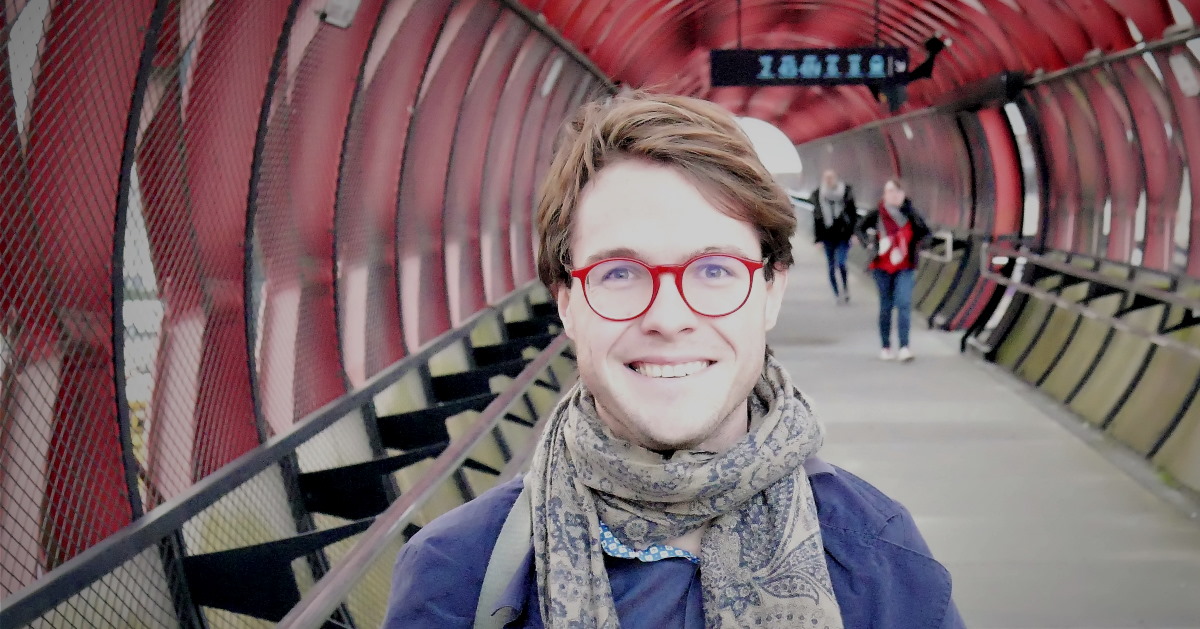
Connecting people and places
Curious about everything and always sensitive to cultural expressions, I have developed a career path that focuses on heritage, ancient and contemporary art and the performing arts. Much more than a love of "old stones" (I don't like this expression), attachment to heritage is for me the first step in creating a link between a person and the territory in which he or she is located. My playground is the Vendée, Brittany, Anjou, Charentes or Poitou. it is a permanent curiosity that feeds me wherever I go.
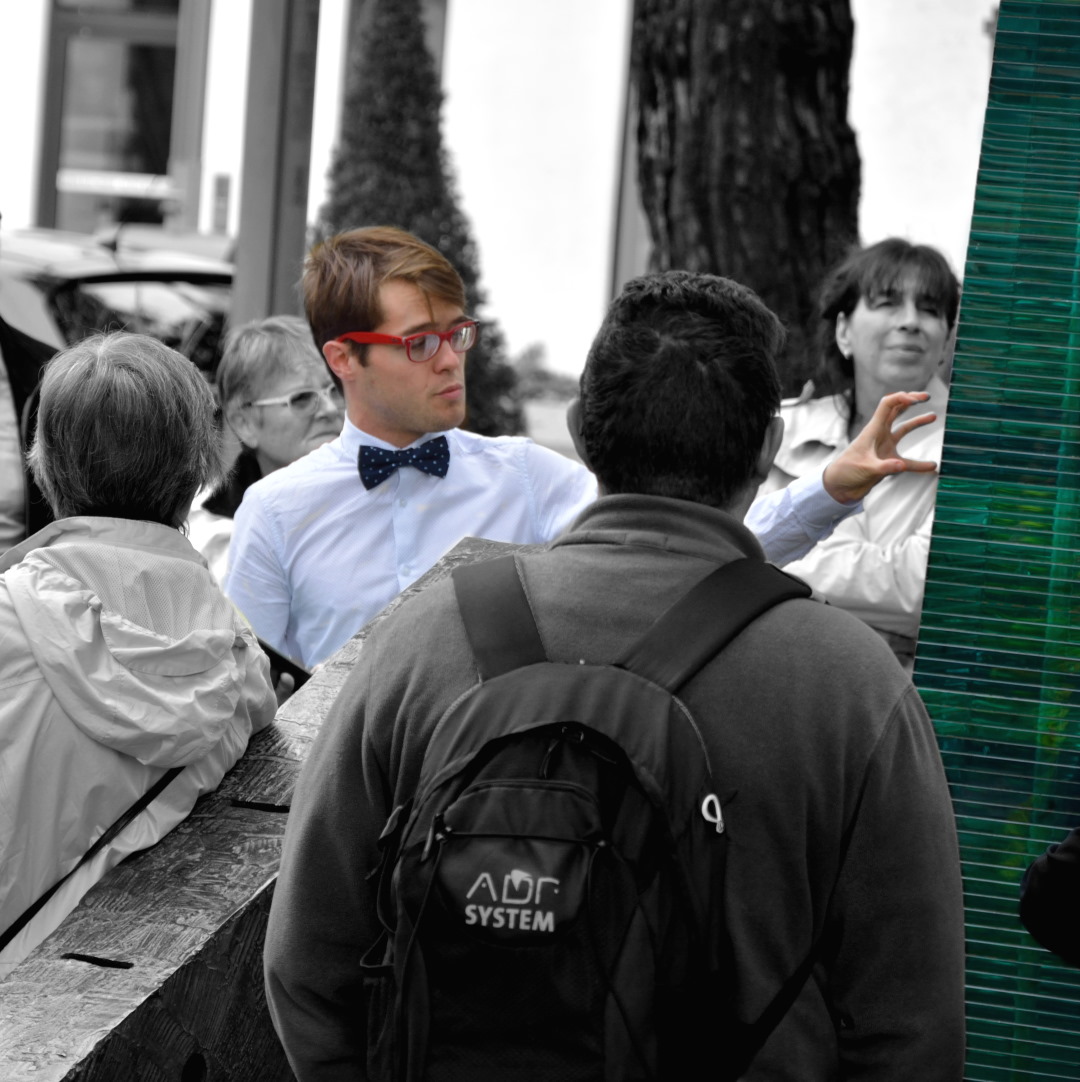
My life in heritage
I was 14 years old when I took my first guided tour. It was the continuation of a personal investment that started a few years before with archival research outside of school hours. An artist I like very much, Nicolas Schöffer, used to say: "To explain is to involve oneself and others." It sums up the approach I am trying to apply in my work as a guide; to create a link and give the public the key to appropriation, the opportunity to absorb the subject of artistic expression or architectural heritage. It doesn't matter whether the visitor likes or dislikes it, what matters is that he or she hasn't come out indifferent.
A visit is above all a moment of exchange whose purpose is the emotion felt in relation to the place.
However, I cannot sum up my journey simply as a tour guide. I'm used to giving lectures, doing research, working in the field of welcoming the public or working in the performing arts industry. I am also involved in associations, with guide dogs for the blind for example.
The research, through which I fill my free time, is centered on subjects such as art in the public space, ancient heritage, urban planning, etc. I write for Ouest-France, have published a plan-guide on public art in La Roche-sur-Yon. At times I meet with artists to help facilitate immersion into their role. Since 2018, I have worked on the France 3 television program Des Racines et Des Ailes (Roots and Wings) filming segments devoted to the Vendée, and a few months ago, I started a series of heritage columns on RCF radio. These opportunities allow me to highlight little known subjects such as the star factory in Fontenay-le-Comte, history of the reconstruction of Chambretaud church, and the heritage of La Roche-sur-Yon and Fontenay-le-Comte.
All these media passages are voluntary but necessary to reach the public
who wouldn't visit spontaneously.
But cultural mediation requires above all the implementation of measures adapted to all audiences. In continuation of my commitments and my research, it has been important to propose to misc. associations descriptive and tactile visits of works of art in the public space for people with visual disabilities. It is an approach that I have tested in the urban space but also inside the monuments with objects that are not very fragile, materials brought back, etc. It is interesting to note that the visually impaired often perceive cultural elements much better than visitors with perfect sight. Besides mediation, writing also occupies an important part of my free time. I have just finished a historical work; I am starting another one and a novel (which will not be historical).
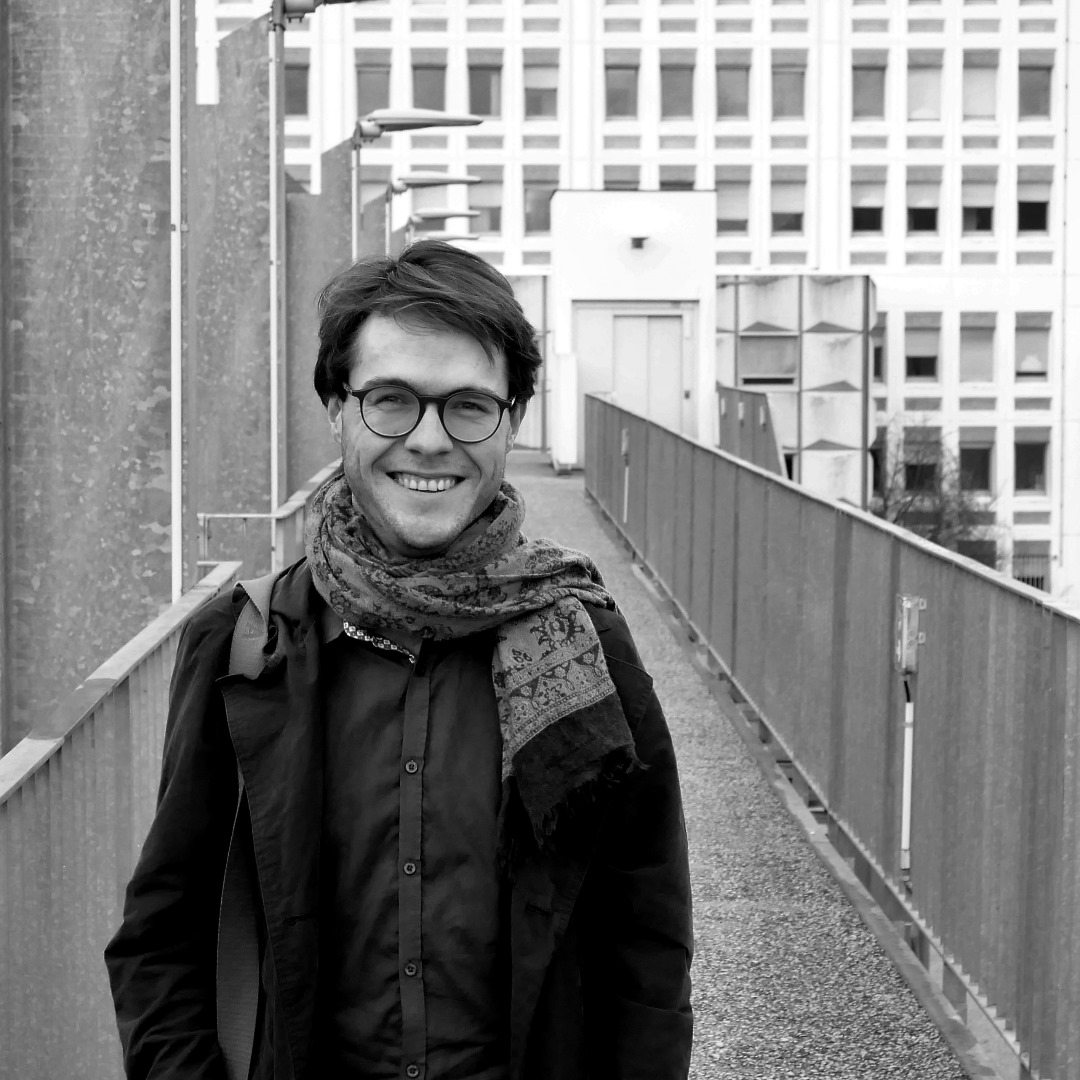
patrimoine includes modern architecture
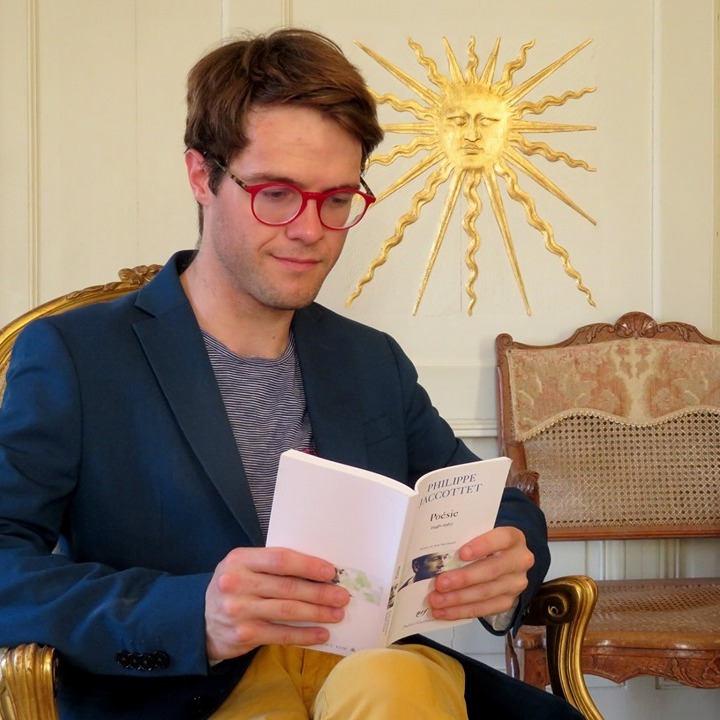
at chateau de terre-neuve
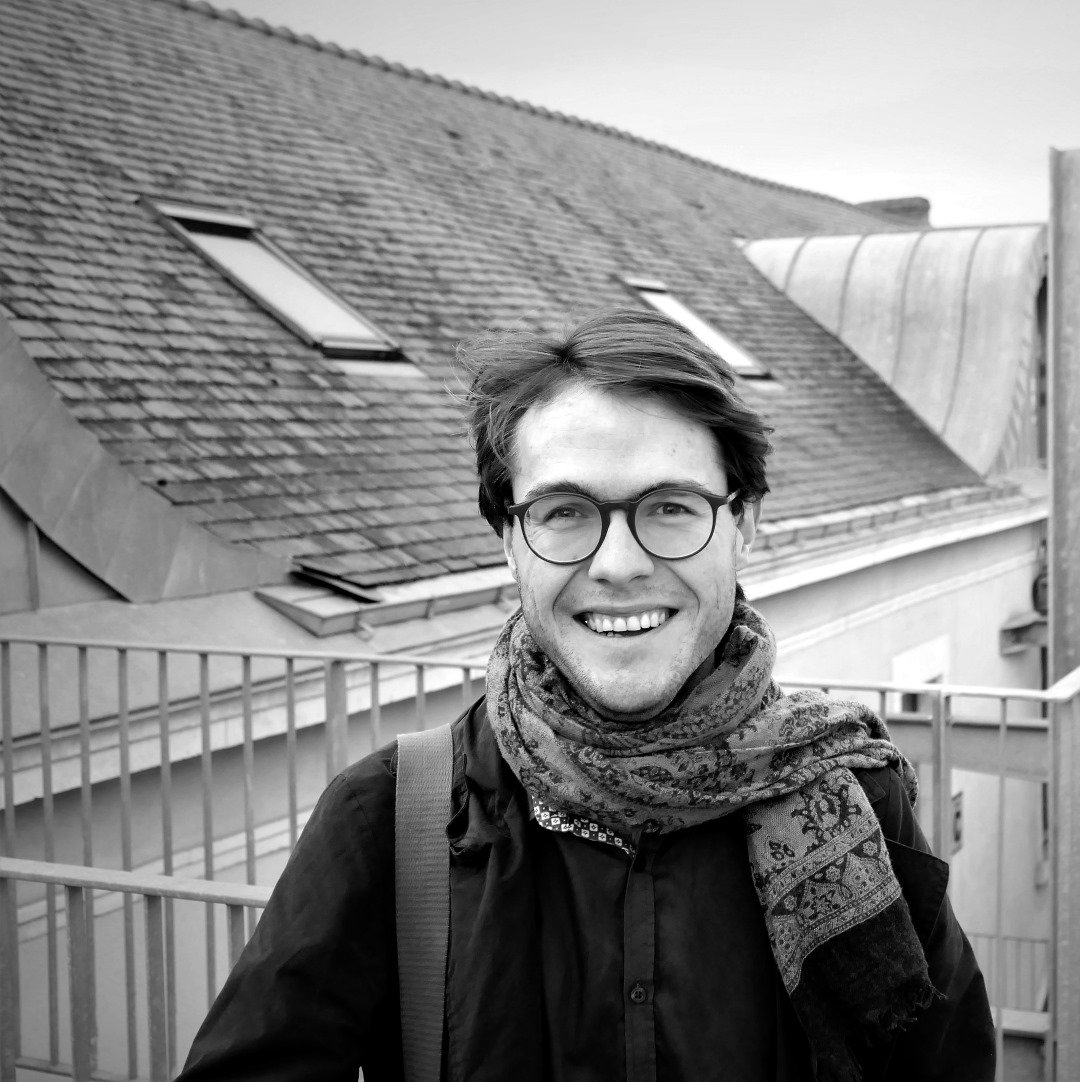
exploring urban Vendée
At the Château de Terre-Neuve, where I have just completed my second season as a guide, my life’s missions were also part of the process of handing the monument into the care of Guillaume du Fontenioux, a descendant of Claude Tendron de Vassé who bought the Château in 1805. The continuous revival of the castle follows several decades of work adapting it to the needs of tourism. The previous generation having largely transformed the site to ensure its preservation, today's task can be more focused on developing cultural opportunities. A castle museum was created in 2018, as well as an office and bedroom that present the furniture and spirit of Octave de Rochebrune, the artist who owned the castle in the 19th century.
It is necessary to be innovative since each monument, whether public or private, needs visitors to live, and to be portrayed in the best conditions. The work which began in 2017, has brought the history of the château and the journey of Octave de Rochebrune, artist and owner of Terre-Neuve in the 19th century, back to the heart of the visit. We also developed a game booklet to include children in the tour (French and English), which was a great success. In 2018, the first year of opening under the new formula, my role as a seasonal worker was to create the scientific content of the museum, rewrite the framework for the guided tour etc. Anno 2019 was marked by an introduction of videos to promote the castle's heritage but also by a major restoration of the old kitchen. Now, all the historic rooms of the castle are open to visitors.
The work is far from over.
Each generation that arrives must take on new challenges!
What has been done at the Château de Terre-Neuve over the last few years is primarily the result of the collective and voluntary commitment of the owners and their friends. Terre-Neuve is not a museum, it is a castle inhabited by the family that owns it. The rooms which the public are invited to visit are regularly used and I must say that having a drink with other guides in the parlour of the castle is a very pleasant experience indeed.
My work continued along the same lines in 2019. Highlighting the major role played by Octave de Rochebrune who, in the 19th century, was one of the few to appreciate the importance of preserving our heritage was of great importance. In transforming Terre-Neuve, Octave de Rochebrune made it a place to collect items that may otherwise have been destroyed. Decorations from the Château de Coulonges-sur-l'Autise (which was then largely dismembered in the form of a stone quarry) and woodwork from the Château de Chambord (dismantled in the 18th century and sent to the attics) were saved at Terre-Neuve. Sadly, it is little compared to the amount of destruction that happened. To this must be added numerous restorations of Fontenaisian monuments by Octave de Rochebrune, the construction of the Charzais fountain featuring engravings representing the heritage of several French regions, etc. It is this spirit for heritage enhancement that we are promoting Château de Terre-Neuve, while also inviting visitors to discover the old town of Fontenay and its museum.
Working in a monument is not easy. I have been experiencing it for many years now. But my passion is still as intact as ever. I am happy to have contributed to launching some restoration and enhancement programs. In a heritage site, you have to ensure both the cultural presentation and the management of technical problems that can arise at any time. I have the advantage of knowing how to tinker, which is frankly very useful! For me, defending heritage, art in the public space or the performing arts is like a combat sport. It is not useful to just go for it. You must show patience and perseverance.
Respectfully submitted,
William Chevillon
Images by Alexandre Vuillaume, André Picquenot and Anaëlle Tessier
Follow William via any of these platforms:
https://williamchevillon.tumblr.com/
https://rcf.fr/culture/patrimoine/un-lieu-une-histoire
https://www.facebook.com/
https://www.linkedin.com/in/
Share this Post
